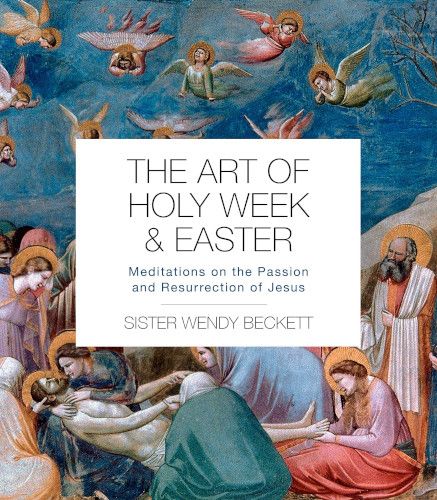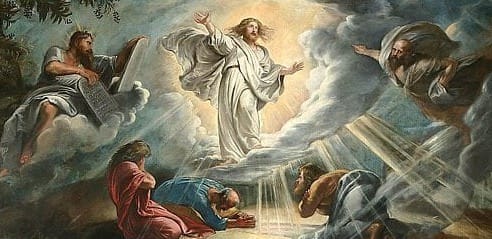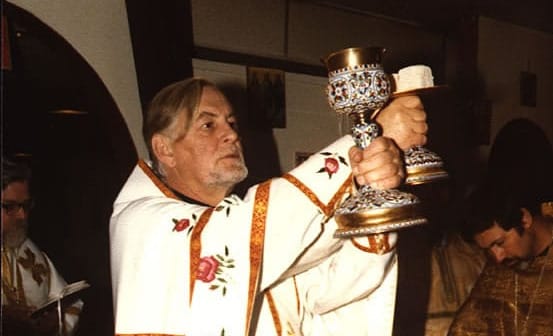From the Editor's Desk
We are about to enter the week in which the Church commemorates of the Lord's Passion. It is time to follow up on Five Books for Catholics' pick of books for Lent with an apposite selection for Holy Week.
- Jesus of Nazareth: Holy Week: From the Entrance into Jerusalem to the Resurrection
by Joseph Ratzinger/Benedict XVI - Stations of the Cross (also available for Kindle)
by St. John Henry Newman - The Fourth Cup: Unveiling the Mystery of the Last Supper and the Cross (also available for Kindle)
by Scott Hahn - The Art of Holy Week and Easter: Meditations on the Passion and Resurrection of Jesus (also available for Kindle)
by Sister Wendy Beckett - Passion – Officivm Hebdomadæ Sanctæ (Recording)
by Tomás Luis de Victoria: Le Concert des Nations directed by Jordi Savall

1.
Five Books for Catholics’ first recommended reading for Lent was volume one of Pope Benedict XVI’s Jesus of Nazareth. It topped the list for two reasons. First, to honour the late pope, who passed away at the end of last year. Second, the first volume of his Jesus of Nazareth trilogy explores the events from Christ’s life that feature prominently in the Lenten liturgy.
It is appropriate that the first recommended reading for Holy Week is the second volume of the trilogy: Jesus of Nazareth: Holy Week: From the Entrance into Jerusalem to the Resurrection.
The first eight chapter map nicely onto Holy Week, combining scholarship and spirituality.
"Holy Week, which for Christians is the most important week of the year, gives us the opportunity to immerse ourselves in the central events of the Redemption, to relive the Paschal Mystery, the great Mystery of faith"
Benedict XVI, 8 April 2009

2.
During Lent and Holy Week, Catholics around the world pray the Stations of the Cross. If you are looking for an aid to praying them, consider the meditations that St. John Henry Newman wrote for the faithful at the Birmingham Oratory. They are vivid and profound.
It also helps that they are beautifully written. No less a stylist than James Joyce admired Newman's "cloistral silverveined prose."

3.
On Holy Thursday, the Church commemorates Christ’s institution of the Eucharist. During the Last Supper, Jesus transforms the Passover meal into a new rite, which he binds to his own sacrificial death as the Lamb of God on Good Friday. Each Mass, no matter the setting in which it is celebrated, makes present the Paschal mystery of the Sacred Triduum.
Scott Hahn’s The Fourth Cup is an accessible yet erudite guide to understanding these connections. Reading it, therefore, can help us prepare for the Sacred Triduum.
"When we go to Mass, we do not go only to pray, no: we go to renew, to bring about again, this mystery, the Paschal mystery. It is important not to forget this. It is as though we were to go to Calvary – it is the same – to renew, to bring about again the Paschal mystery."
Pope Francis, 30 March 2021

4.
Fourth on the list for Lent was Sister Wendy Beckett’s The Art of Lent. In it, she composed a meditation on a work of art for each day of Lent, she composed a mediation. She also published a similar collection of thirty meditations for Holy Week and Easter.
Each of the thirty artworks represents a scene from the Gospels, from Palm Sunday on. The artists produced them so that we could enter more deeply into the depicted mystery. Sister Wendy’s book reminds us that we need to pray with sacred art during Holy Week and helps us do so.
For more on Sister Wendy, check out the post for Lent.

5.
The fifth recommendation for Lent was not a book but a recording of a masterpiece of sacred music. There is even more reason to follow that precedent when it comes to Holy Week. Several towering masterpieces of sacred music, indeed of Western music, have been composed for Holy Week. J.S. Bach’s St. Matthew’s Passion and St. John’s Passion spring to mind, as does Gregorio Allegri’s Miserere, the piece that Five Books for Catholics picked for Lent.
Allegri composed his setting of the Miserere around 1638 for the Tenebrae services of the Sistine Chapel. Fifty-three years earlier, Tomás Luis de Victoria (c. 1548-1611) had published in Rome his classic setting of eighteen of the twenty-seven Tenebrae Responsories.
Victoria’s Tenebrae Responsories are still sung regularly during Holy Week services and there are many fine recordings of them. However, they are just a part of the music that Victoria published in 1585 for the Holy Week Offices. That is why Jordi Savall’s 2021 recording of Victoria’s complete Officium Hebdomadæ Sanctæ stands out. It presents Victoria’s compositions for Holy Week in full and the CD version comes with booklets containing the texts and essays on the work.
Victoria, one of the major composers of late Renaissance sacred music, hailed from Sanchidrián, Castille, but worked in Rome for twenty-two years as a chapelmaster and organist. His style is more direct and dramatic than that of Palestrina, his contemporary. It is more direct because the counterpoint is less elaborate; more dramatic because it is freer in rhythm and in incorporating dissonance.
Jordi Savall, who conducts this recording, gives an overview on the record label’s website.





